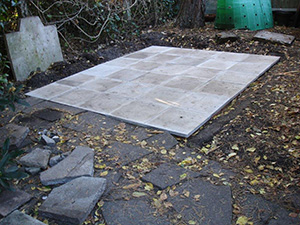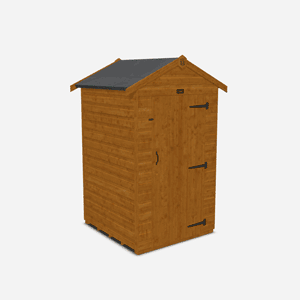
When it comes to choosing a playhouse, you need to keep their safety, comfort and enjoyment in mind. Here are the factors you need to consider:
SAFETY
To keep your child safe, you don’t want to take any chances – which is why safety is the number one consideration on this list.
Playhouses must use shatterproof styrene instead of glass to prevent them breaking. All doors also come with magnetic catches so your child can open them easily. Each door should also be fitted with rubber safety strips to stop them catching little fingers. A playhouse with a non-locking door may also help protect your child’s hands.
If you’re buying a wooden playhouse, these best ones use planed wood and are therefore free from splinters. You may also want to look for a playhouse with a Play Foor. These ease-to-clean and slip-resistant poly mats lay over the floor of the building to further protect your child.

AREA
1. Space And Position
Playhouses come in all shapes and sizes. But before you choose a playhouse for your child, think about the space you have available in your garden or yard.
First, think about how much you have. You no doubt want enough space to let your child’s imagination run free, but there are practical factors you also need to think about.
Do you have enough space to position the playhouse so your kids will get plenty of sunlight and fresh air? It would also be wise to ensure you buy a playhouse that you can position in a way that allows you to keep an eye on your little one(s), while also keeping them away from sharp objects and other potential hazards.
No matter how big or small your garden, we have playhouses to suit your little ones – ranging from 3x3 feet to 8x8 feet.
Making Sense of Playhouse Dimensions

As in the case of any garden building, manufacturers often state dimensions in different ways. So when different manufacturers refer to a 3x5 playhouse, one company could be referring to the internal size, whereas another may be describing the external dimensions.
Manufacturers also describe length and width in different ways. At Tiger, the width is always on the gable side. But for some other manufacturers, the width is always on the side where the door is.
With all of this mind, make sure you check these details before you buy your child a playhouse. After all, you want to make sure the building is big enough for your kids to enjoy.
2. The Playhouse Base
All garden buildings must have a firm and level base to keep them in good condition – and playhouses are no different. While most manufacturers don’t supply playhouse bases, you must have one in place before you assemble your child’s hideaway.
The building base can be made from a choice of different materials – the most common are concrete, timber bearers and paving slabs.
Does the Playhouse Come with a Floor?
Before buying a playhouse, you may want to check it comes with flooring, as not every building of this type has one. The best playhouses come complete with flooring and joists which are pre-attached to lift the building off the ground.
If you wish to build a timber base, you’ll probably need to place the joists in the opposite direction to the building’s floor joists. However, this may depend on the size of the building, so you should check with the manufacturer before installation.
To learn more, our guide on building a shed base also applies here.

3. Make Sure The Playhouse Is Easy to Access
Once again, it’s important to think about the size and shape of your yard or garden here. Are there any fences or walls close to where you want to assemble the playhouse?
If so, it would be wise to buy a playhouse with doors that are easy for kids to access from that spot.
If the door is in an awkward position, that doesn’t have to be a deal breaker – some manufacturers can change the door placement on request; they can even change the hinges from the right to the left side.
In addition, some playhouse manufacturers make buildings with pre-hung doors – making it easier to install in a tighter space.
BUILD
The most common playhouse materials are wood and plastic. Let’s take a look at each material has to offer…
1. Wooden Playhouses
Wooden playhouses are the traditional choice – and they’re also the most popular with kids (and adults too!). These buildings are available in a wide range of shapes, styles and sizes.
The wood on this type of playhouse gives each building a natural look and feel that blends in beautifully with its surroundings. Timber is also easy to paint, so you can add a touch of colour to suit both yours and your child’s tastes.
Beware of Low-Quality Timber
The best playhouses are made from high-quality timber. By contrast, some low-quality playhouses are made from OSB. This cheap chipboard won’t withstand the elements – and won’t last too long either!
Some of the finest playhouses on the market also use shiplap – an upgraded form of tongue and groove cladding that helps keep out rain and wind. Some manufacturers also offer loglap cladding (usually as an upgrade) to give a log-cabin-type appearance.
High-quality playhouses will also be pre-treated to protect them in the short-term. To protect your child’s wooden playhouse in the long-term, you’ll need to retreat it once a year. As long as you do this, the playhouse will stay strong and look great for many years.
2. Plastic Playhouses
Much like plastic sheds, plastic playhouses are lightweight, easy to assemble, durable, waterproof and generally maintenance-free.
However, these plastic buildings arguably don’t look as nice as the more traditional wooden alternatives. They aren’t as easy – and are even sometimes impossible – to customise and can suffer from condensation build-up.
TERMINOLOGY
Shopping can sometimes be a stressful experience, but it needn't be. Our handy guide will explain everything and break down the key concepts of what makes up a Playhouse - guaranteed to give you a strees free shopping esperience.







